The excitement and optimism were palpable at the Australian Energy Storage Conference and Exhibition held this week in Sydney at the Australian Technology Park. The exhibition portion had on display a cross-section of the energy storage products and approaches currently being taken up by the Australian market, while conference speakers discussed the range of challenges and opportunities for the nascent industry. The event boasted 33 exhibitors, 50+ speakers and over nearly 1,500 attendees.
Capturing the key themes: What’s happening in energy storage?
Apart from the overarching atmosphere of positivity that characterised the conference, a number of other themes and motifs made themselves apparent to anyone visiting exhibitor booths, conversing with other attendees, or listening in on the conference talks. We’ve summed them up below.
- The energy storage market edging ever closer to taking off in Australia. This is something that none is denying – there are only the questions of when and how.
- General agreement that Australia is ‘ground zero’ for energy storage globally due to a combination of factors that make the market unique: High grid electricity prices, high penetration of solar PV systems, low solar PV system costs, and a populace generally disgruntled with utilities.
- Energy storage is already on the cusp of affordability, but does is not yet a financial ‘no brainer’ ready for the mass market. At least two conference speakers had slides drawing comparisons between the historic downward solar PV price trajectories to the current price trajectories for energy storage technologies. And as was the case with solar PV, early adopters with a bit of cash to burn who are also willing to accept longer payback periods than PV-only systems will jump into the game first.
- Tesla’s Powerwall has everyone’s gears turning – despite the fact that it is years away. It’s testament to Tesla’s viral marketing might that the announcement of a product that does not yet even exist has managed to set benchmarks and frame the conversation for the whole industry.
- Big questions about how energy storage systems will be designed and used. Although the most apparent and likely use of energy storage by ordinary households will be to shift solar energy use from daylight to evening peak times, this is only one approach. What about the value of having emergency back-up power?
- There is a lack lack of reliable, independent information on energy storage. Unlike solar PV and inverters, energy storage does not have its own Australian standard or regulatory framework, so there is very little to prevent cowboys from making their way into the market. And it would only take a small number of bad publicity events to push the wave of optimism about energy storage back a few steps to give it a bit more realism. Can such negative fiascos be averted by more proactive government and industry body involvement?
- The role of hybrid inverters. Hybrid inverters may be retrofitted to include batteries but can also serve as standard solar PV inverters – while not necessarily costing significantly more. With hundreds of thousands of inverters soon needing routine replacement, will many homes opt for the extra expense of being battery ready for when prices do drop to ‘no brainer’ levels?
- Alternatives to energy storage for solar PV system owners. What should solar system owners who can’t afford batteries (or don’t yet see the value in them) do to use more of their own solar power? How about smart heating and cooling systems that know to switch on when the sun is shining?
- Will utilities provide the energy storage for their own purposes – or will consumers use energy storage to get away from the utilities? Both approaches are currently underway: A number of network companies from around the country are exploring ways to use smart energy storage to evolve their business models, while homes are looking at it as a way to lessen their reliance on grid electricity. Products representing both of these approaches were on display in the exhibition hall. (It’s probably worthwhile for all of us to revisit CSIRO’s 2013 investigation of this topic.)
- Will the grid become fully decentralised as energy storage uptake increases? This question was addressed directly in the last conference event of the conference: a tongue-in-cheek ‘debate’ about this issue during which Thomas Edison made an appearance via time machine, amongst other absurdities. Regardless of the weirdness, the debate managed to capture many of the key points of the broader discussion and questions about the future direction of the industry. It was pretty clear that the general feeling among participants on both sides was that the grid doesn’t need to be eliminated – it needs to be used more wisely.
What Solar Choice took away: How can we help our customers make a better decision about energy storage?
Solar Choice’s role as a brokerage and advice service is to help our customers navigate the quickly developing world of solar-plus-storage. Perhaps the most important thing for Solar Choice customers at present is understanding what to expect of this technology.
If you are interested in energy storage, you probably fall into one of two categories:
- You already have a solar PV system and want to retrofit an energy storage system onto your home.
- You are considering a new solar PV system and wondering if you should get batteries at the same time.
In the coming weeks we will be answer a number of questions that folks in both of these camps are likely to have through blog articles and other resources. Keep an eye out or sign up for our newsletter below to keep up to date!
Join our mailing list
Australian Energy Storage Conference & Exhibition 2015: Photo Gallery
© 2015 Solar Choice Pty Ltd
- Solar Power Wagga Wagga, NSW – Compare outputs, returns and installers - 13 March, 2025
- Monocrystalline vs Polycrystalline Solar Panels: Busting Myths - 11 November, 2024
- Solar Hot Water System: Everything You Need to Know - 27 February, 2024


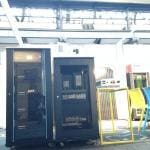
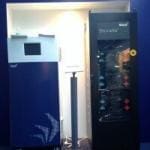


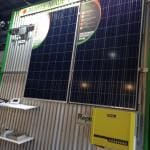

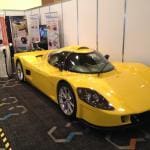


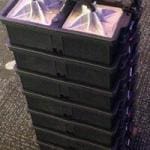



Wouldn’t Germany be ‘ground zero’ for battery storage of PV output?
Good point, Rod. There’s a lot of interest in energy storage here in Australia because of the odd economic circumstances. Batteries are ready to take off here despite a lack of government incentives, while Germany’s market has been built up on the back of strong, systematic government support that also brought the solar industry to where it is there.
In this way, Australia is unique when it comes to energy storage. If we ever do see government incentives for energy storage, the industry will surely undergo a massive expansion in a very short time. But even without government support we’re likely to see significant growth.
These are amazing times for Solar Power users,can’t wait for the moment when Battery Storage becomes affordable.